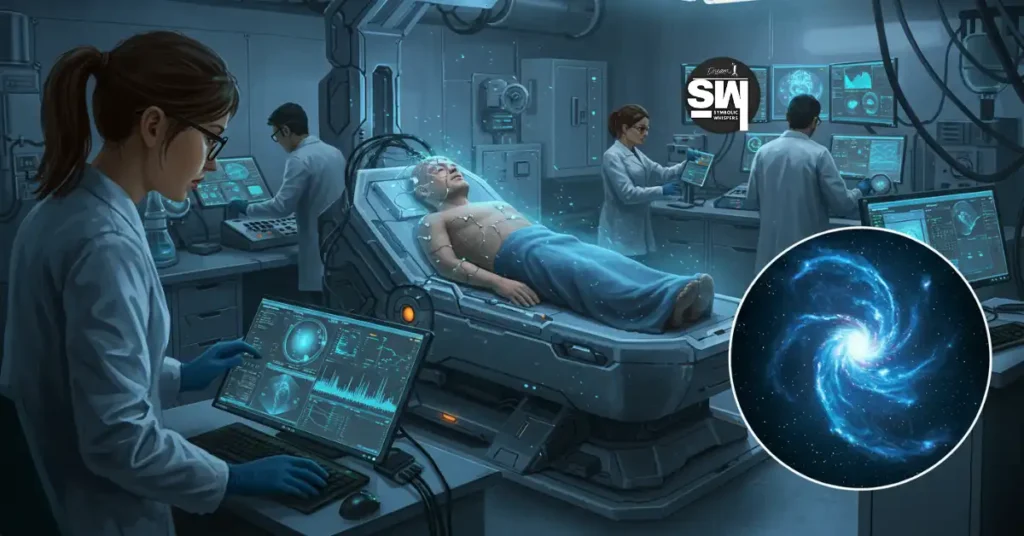2025 Amazing Discovery: How Dreams and Sleep Quality Are Connected in New Research!
Have you ever wondered how dreams and sleep quality are connected? Scientists have made incredible breakthroughs that show strong links between what happens in our dreams and how well we rest. Researchers can now talk to people in dreams and even help them control what happens while they sleep.
These discoveries about dreams and sleep quality are changing how we think about rest and could help people who have nightmares or sleep problems. The newest research even explores communication between humans in dreams!
Key Points
- Scientists successfully established real-time dialogue with lucid dreamers and enabled dream-to-dream communication between individuals, revolutionizing sleep research.
- Vivid, controlled dreams correlate with feeling more rested, even if sleep metrics (e.g., duration) remain unchanged, linking dream content to restorative sleep
- Devices like tACS induce lucid dreaming to reduce nightmares and enhance rest, showing dream control improves sleep disorders and mental health.
- New research proves dreams are scientifically trackable brain patterns, not just abstract experiences, enabling objective study of sleep quality connections.
- Breakthroughs hint at shared dream environments for skill practice, therapy, or social interaction, blurring lines between sleep and waking cognition.
How Dreams and Sleep Quality Affect Each Other
Two-Way Dream Conversations
In 2021, scientists talking to dreamers achieved something amazing – they established two-way dream conversation with people during sleep! These weren’t just any dreams though. The sleepers were having what’s called “lucid dreams,” which means they knew they were dreaming while it was happening.
The connection between dreams and sleep quality became even clearer in 2024. Recent dream research discoveries showed that scientists could train some lucid dreamers to perform virtual car control in dreams!
The dreamers made tiny muscle movements that researchers could detect. These movements sent commands to make a virtual car move. This showed that people can make decisions during sleep that affect both their dreams and sleep quality.
Breakthrough in Dream Communication
Even more incredible, a company called REMspace claims they’ve achieved dream-to-dream communication – they helped two people in different places communicate with each other while both were dreaming!
Imagine texting your friend, but you’re both asleep! This ability to communicate with people in dreams relied on special equipment that tracked their brain waves and helped them exchange simple words in a special language they created for their dreams.
See also Dream Telepathy: 5 Secrets to Entering Someone’s Dream World!
If more scientists confirm this lucid dream conversation technology really works, it could change how we understand the relationship between dreams and sleep quality. It might even help with treating mental health problems or learning new skills while we sleep!
How Your Dreams Affect Your Sleep Experience?
Have you ever woken up feeling like you barely slept, even though you were in bed all night? How scientists study dreams has revealed why that happens!
Research presented in 2024 showed that dreams and sleep quality are directly linked through what dreams you remember. People who recalled vivid, interesting dreams often felt they had deeper sleep, even when measurements showed otherwise.
Studies on dreams and sleep quality could help people with insomnia (trouble sleeping). Scientists are exploring whether teaching people to have more meaningful dreams might help them feel like they’re getting better rest. This is one of the most promising dream research breakthroughs for everyday sleep problems.
Engineering Better Dreams for Improved Sleep Quality
Scientists aren’t just studying the connection between dreams and sleep quality – they’re learning to improve both at once!
New technologies like transcranial alternating-current stimulation (tACS) can help people control dreams research shows. By changing brain rhythms, this technology helps induce lucid dreams. This means scientists might soon help people:
- Reduce nightmares for better sleep
- Treat sleep disorders by improving dream content
- Create specific dream experiences for therapy or fun
Brain scans have identified special patterns that happen during lucid dream communication. In some studies, dreamers have been able to perform tasks like calling for dream characters or signaling researchers during bad dreams so they could be woken up.
How Our Understanding of Dreams and Sleep Quality Is Changing

| Old View | New Scientific View |
|---|---|
| Dreams and sleep quality are separate | Dreams and sleep quality are deeply connected |
| Dreams are just personal experiences | Dreams are scientifically measurable events |
| Dreams can’t be controlled | Dreams can be engineered to improve sleep |
| Dreams are separate from waking life | Dreams connect to health and learning |
| Dreams only useful for psychology | Dreams useful for communication and therapy |
See also How To Use The Law of Attraction Correctly? Life Changing!
Scientists from different fields like neuroscience, psychology, and technology are working together to understand the relationship between dreams and sleep quality better. Instead of just seeing dreams as strange stories our brains create while sleeping, they’re finding ways to use dreams to improve our health and thinking abilities.
What This Means For Your Sleep and Dreams
These discoveries about dreams and sleep quality mean we might someday use our dreams in amazing new ways. Imagine practicing a skill while sleeping, getting therapy for fears during dreams, or even “meeting” with friends in a shared dreamworld!
While most of these technologies connecting dreams and sleep quality are still being tested in laboratories, they show that the science of dreams is advancing quickly. Soon, the line between being awake and dreaming might not be as clear as we once thought.
The next time you go to bed, remember this – the connection between dreams and sleep quality is stronger than we knew. Scientists are getting closer to understand what happens in your brain while you sleep, and they may even be able to come up with strategies to improve your sleep quality and the productivity of your dreams!
FAQ’s About Dreams and Sleep Quality
What is a lucid dream?
A lucid dream is when you know you’re dreaming while still in the dream. It’s like being awake inside your dream where you might be able to control what happens. People who have lucid dreams can sometimes make decisions or even communicate with researchers while they’re still sleeping.
Can anyone learn to have lucid dreams?
Yes, most people can learn to have lucid dreams with practice. Common techniques include reality testing (checking if you’re dreaming throughout the day), keeping a dream journal, and setting intentions before sleep. Some people learn quickly while others need more practice, but almost everyone can improve their dream awareness.
Is dream communication technology available to the public?
Not yet. The dream communication technology mentioned in this article is still being tested in research labs. Scientists are working on making it more reliable and easier to use, but it will likely be several years before similar technology becomes available to the general public.
Can improving my dreams really help with sleep problems?
Early research suggests yes. When people have more positive dream experiences, they often report better sleep quality. For people with nightmares or anxiety dreams, learning to control dream content through lucid dreaming techniques or working with therapists who specialize in dream work may improve overall sleep.
Are there any risks to engineering dreams or lucid dreaming?
Most research shows lucid dreaming is safe, but some people report disturbed sleep patterns or tiredness if they spend too much mental energy trying to control their dreams. Brain stimulation technologies like tACS are still being studied for long-term effects. Always consult healthcare providers before trying new sleep interventions.
How accurate are the claims about dream-to-dream communication?
The dream-to-dream communication research is still preliminary and needs more scientific validation. While the REMspace company has reported successful tests, other scientists need to repeat these experiments independently. It’s an exciting possibility but should be viewed as early-stage research for now.
Could I use these technologies to learn skills while I sleep?
Although you can’t learn entirely new skills during sleep, research suggests that practicing previously learned skills in dreams can improve your abilities. For example, if you’re learning to play the piano, “practicing” in lucid dreams may help strengthen those skills. Scientists are still studying how this works and what its limitations are.







